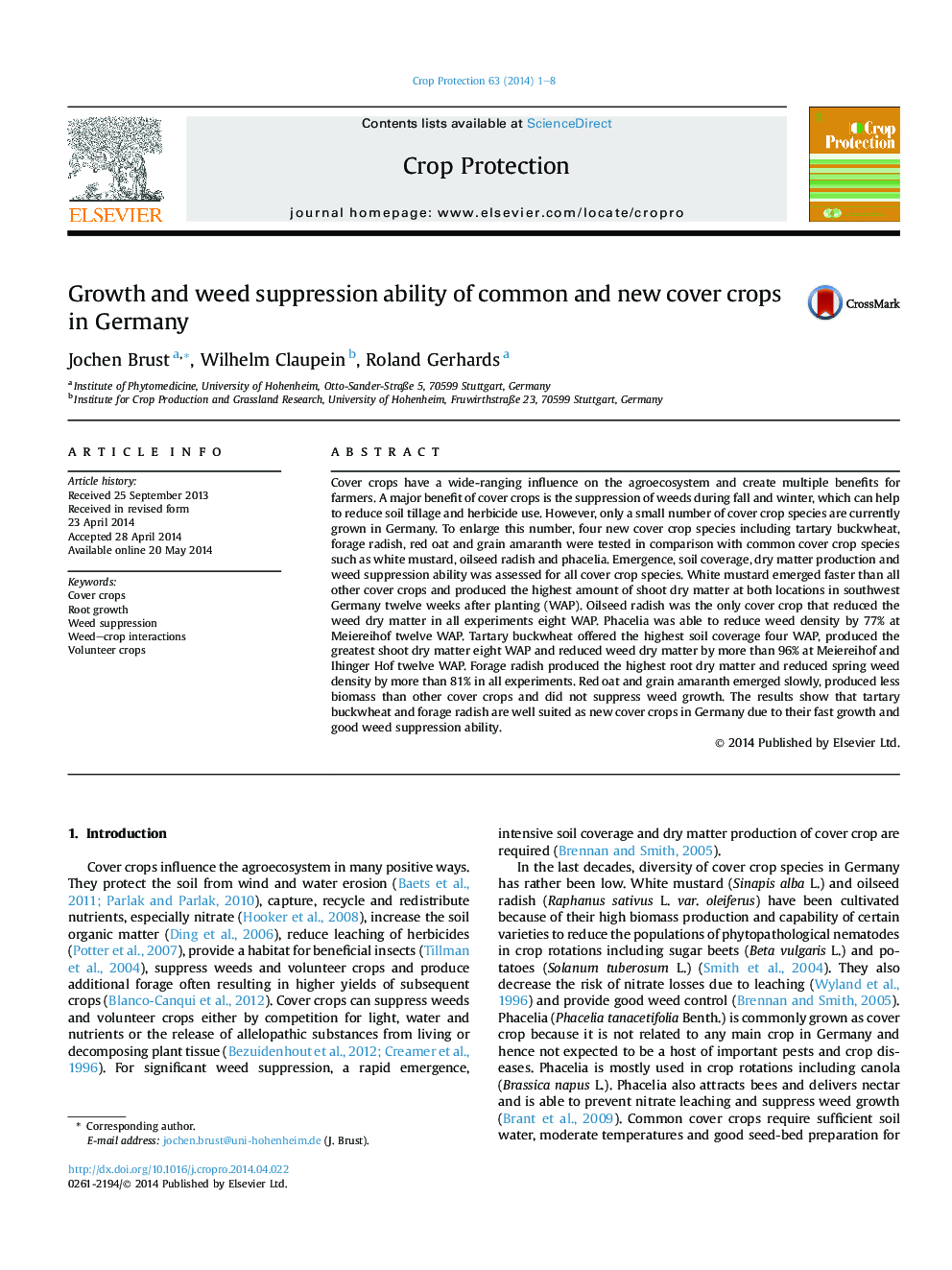| کد مقاله | کد نشریه | سال انتشار | مقاله انگلیسی | نسخه تمام متن |
|---|---|---|---|---|
| 4505931 | 1624324 | 2014 | 8 صفحه PDF | دانلود رایگان |
• We evaluate the growth and weed suppression ability of common and new cover crops.
• Cover crops need fast growth and soil coverage for superior weed suppression.
• Tartary buckwheat and forage radish are well suited as cover crops in Central Europe.
• Cover crop plots also show a reduced weed density in spring.
Cover crops have a wide-ranging influence on the agroecosystem and create multiple benefits for farmers. A major benefit of cover crops is the suppression of weeds during fall and winter, which can help to reduce soil tillage and herbicide use. However, only a small number of cover crop species are currently grown in Germany. To enlarge this number, four new cover crop species including tartary buckwheat, forage radish, red oat and grain amaranth were tested in comparison with common cover crop species such as white mustard, oilseed radish and phacelia. Emergence, soil coverage, dry matter production and weed suppression ability was assessed for all cover crop species. White mustard emerged faster than all other cover crops and produced the highest amount of shoot dry matter at both locations in southwest Germany twelve weeks after planting (WAP). Oilseed radish was the only cover crop that reduced the weed dry matter in all experiments eight WAP. Phacelia was able to reduce weed density by 77% at Meiereihof twelve WAP. Tartary buckwheat offered the highest soil coverage four WAP, produced the greatest shoot dry matter eight WAP and reduced weed dry matter by more than 96% at Meiereihof and Ihinger Hof twelve WAP. Forage radish produced the highest root dry matter and reduced spring weed density by more than 81% in all experiments. Red oat and grain amaranth emerged slowly, produced less biomass than other cover crops and did not suppress weed growth. The results show that tartary buckwheat and forage radish are well suited as new cover crops in Germany due to their fast growth and good weed suppression ability.
Journal: Crop Protection - Volume 63, September 2014, Pages 1–8
